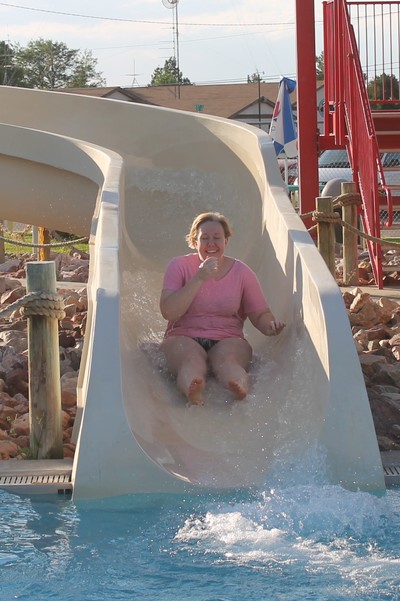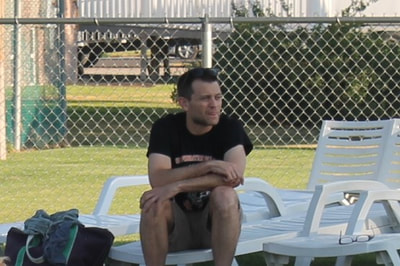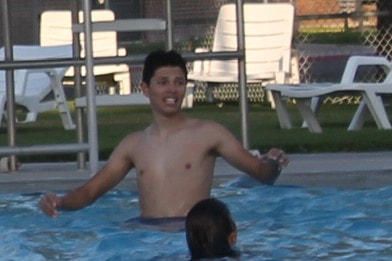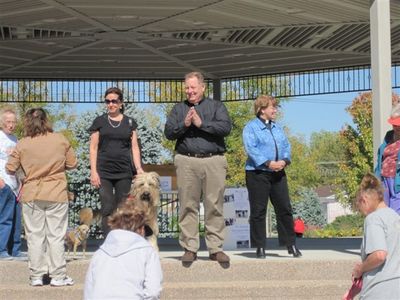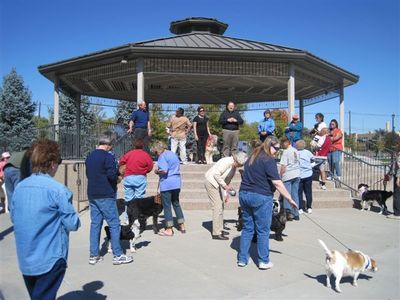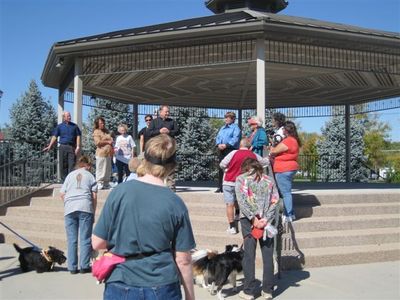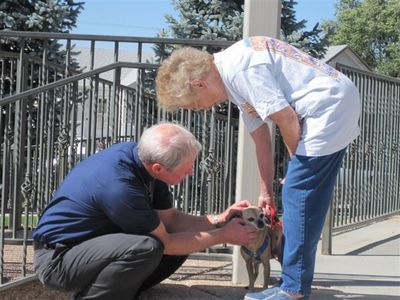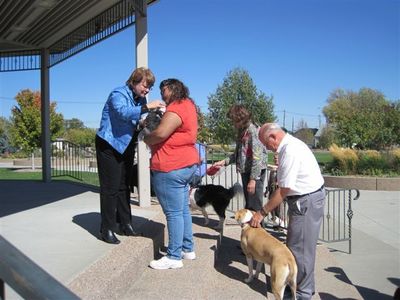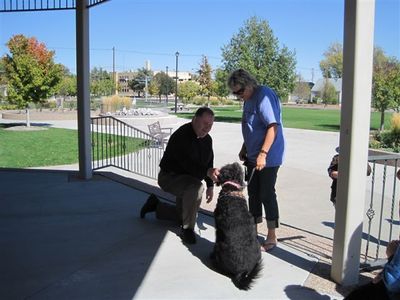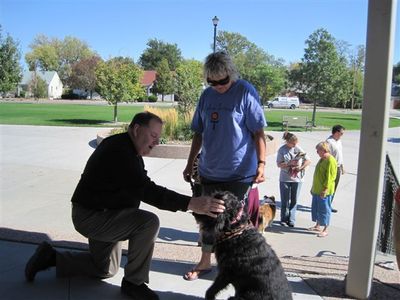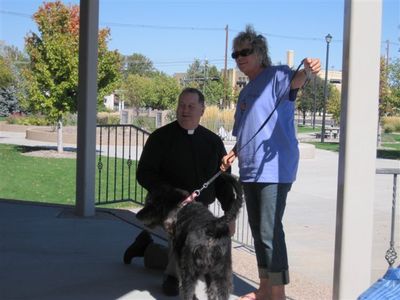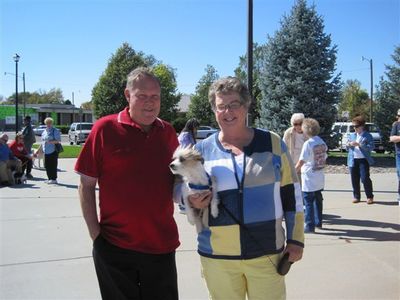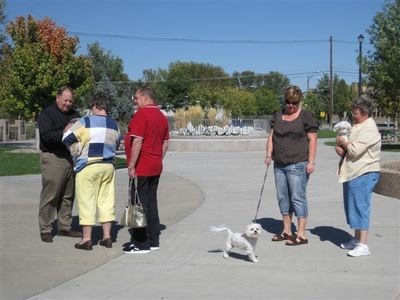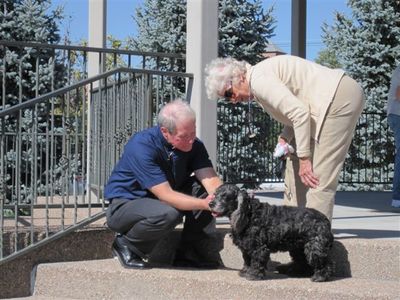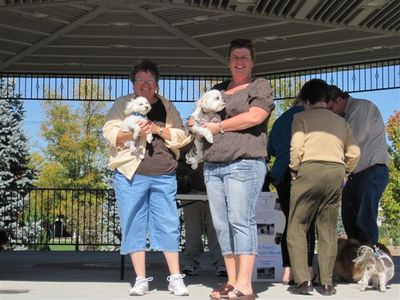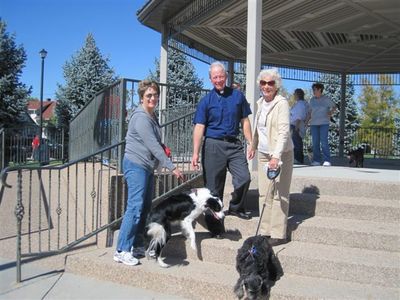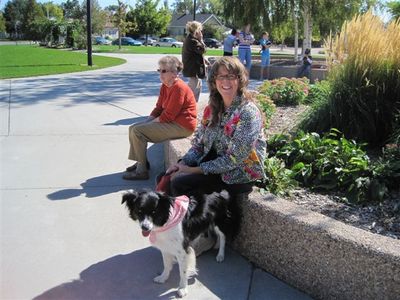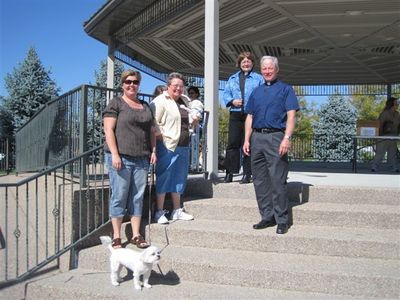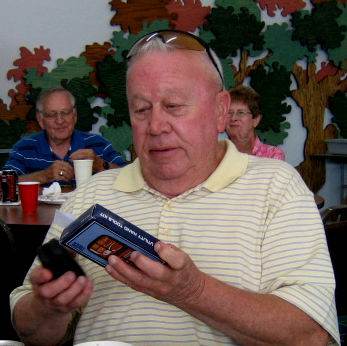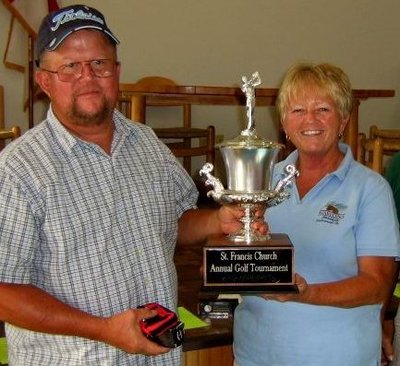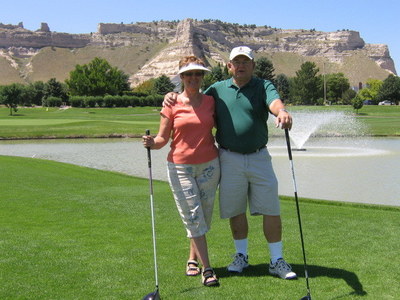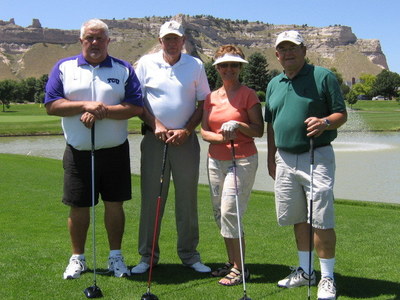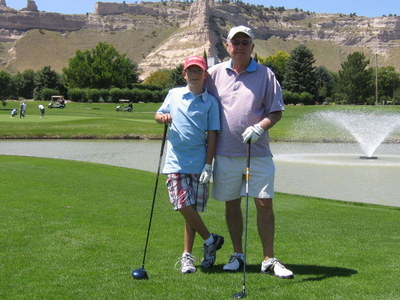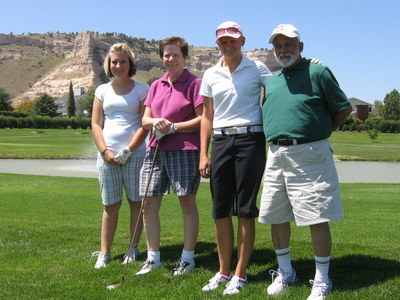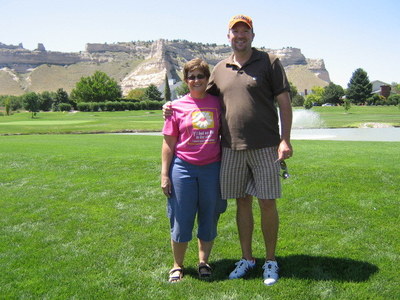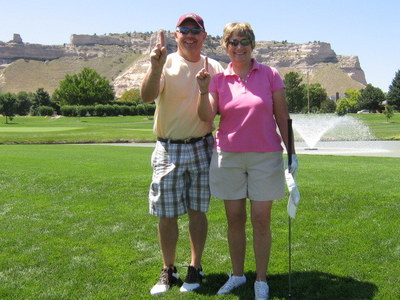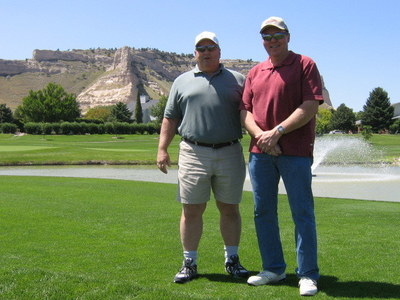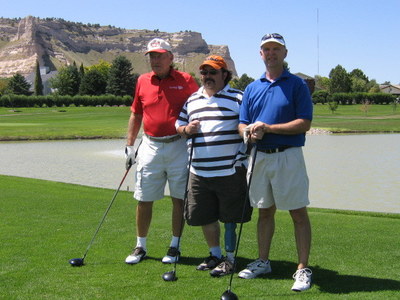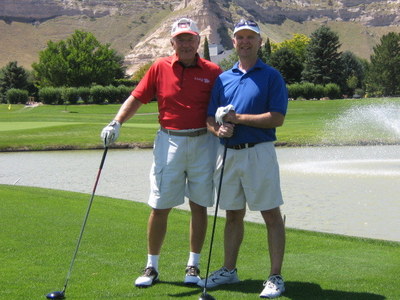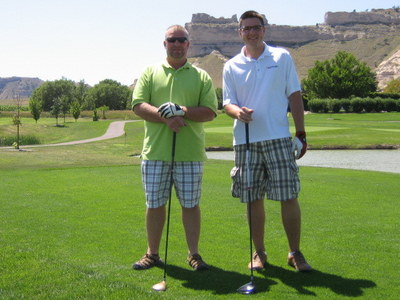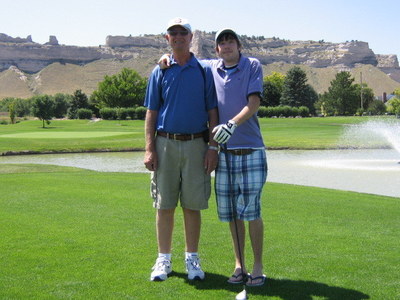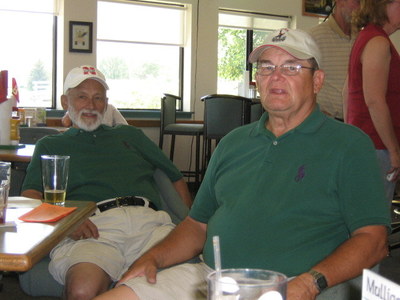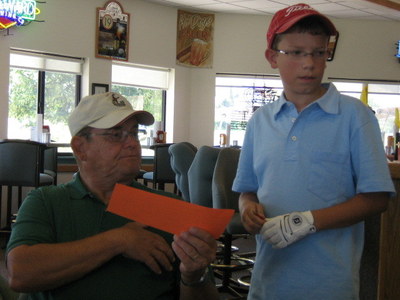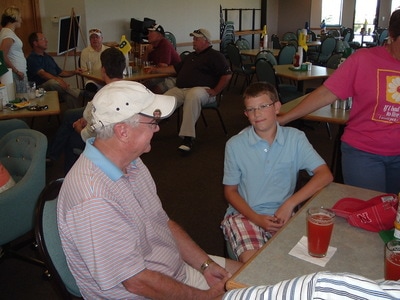Birthdays
Alan Johnson August 30
Karen Anderson September 1
Kathy Tabor September 2
Anniversaries
Carolyn Pevey & Tom Jones September 2
There will be a Sunday School meeting this Sunday, the 27th . . . it is a make-up meeting
for any teachers, helpers and interested inquiries who couldn't make it last Sunday,
regarding our classes for children. Again, it will be right after church . . . pick up your refreshments
and come upstairs to the Godly Play room.
Alan Johnson August 30
Karen Anderson September 1
Kathy Tabor September 2
Anniversaries
Carolyn Pevey & Tom Jones September 2
There will be a Sunday School meeting this Sunday, the 27th . . . it is a make-up meeting
for any teachers, helpers and interested inquiries who couldn't make it last Sunday,
regarding our classes for children. Again, it will be right after church . . . pick up your refreshments
and come upstairs to the Godly Play room.
DioNeb youth and chaperones arrived safely on the 4th of July to this year's EYE (Episcopal Youth Event) at the University of Maryland. The Episcopal Church Office of Public Affairs shared a summary of their first day: Participants heard from Bishop Deon K. Johnson of the Episcopal Diocese of Missouri. He challenged them from the book of Esther to “get up, dress up, and show up ‘for such a time as this’ … Don’t get tripped up on what has been,” Johnson said. “Look forward to what God is calling you to.”
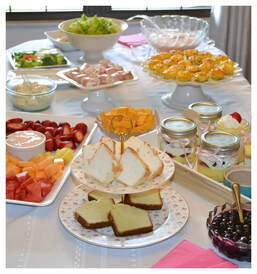
The ECW (Episcopal Church Women) will be hosting a “Ladies Salad Luncheon” on Saturday, June 3, 2023 at 11:30 am in the Parish Hall.
We will be welcoming vocalist Stephanie Coley!
Please RSVP by Friday, May 28th to Nancy Kepler 635-0734 or Barb Manasek 436-7767, if you can attend. Please let us know how many are attending, and if you can share a salad!
We will be welcoming vocalist Stephanie Coley!
Please RSVP by Friday, May 28th to Nancy Kepler 635-0734 or Barb Manasek 436-7767, if you can attend. Please let us know how many are attending, and if you can share a salad!
In the valley since 1904
History of the Episcopal Presence in the Platte Valley
The cities of Scottsbluff and Gering are separated by the North Platte River. Gering became a town site in 1887, and was named the county seat for the newly designated Scotts Bluff County. During those early years, a missionary by the name of George Allen Beecher, who headquartered out of Ft. Sidney, about 80 miles east, would travel on a circuit. This brought him to Gering and Scottsbluff where services held in the homes of early settlers and in buildings borrowed for such purposes.
There had been few attempts at services since both towns had started. In 1904, the parishioners of Gering erected a small church building. Services were held in Gering and Scottsbluff by a number of missionaries. In 1910, the Bishop sent Mr. Henry Ives to establish a mission. On Sunday, August 28, 1910, Mr. Ives held his first services at the chapel in Gering. George Beecher became Bishop of the Missionary District of Western Nebraska and in 1936, dedicated the church in honor of St. Timothy.
A great deal is owed to Henry Ives for starting the mission in Scottsbluff and for writing down his account of it in the records. Ives’ first regular services at St. Andrew’s Mission, was on Sunday, November 13, 1910. Bishop Graves probably chose this name as being the next saint on the Calendar. Within months, the congregation grew and by 1920, St. Andrew’s became a self-supporting parish. The current site of the church was purchased and the first service held in the new building was in 1922 on Christmas Eve.
Two Separate Parishes
For many years both churches in the Valley flourished. St. Timothy’s had moved from a total ministry concept emphasizing baptismal ministry as its foundation. The worship style favored liturgical expression with Rite II at most services. In 1993, St. Timothy’s became part of a cluster with Holy Apostles’ Church of Mitchell, Nebraska. Mounting costs along with a decline in participation made it difficult to sustain programs and outreach endeavors. St. Timothy’s experienced an increase in clergy turnover and a lengthy search process for a rector. After much discussion, the congregation of St. Timothy’s Church prayerfully made the decision to merge with St. Andrew’s Church in Scottsbluff.
A Single New Parish -- St. Francis!
Again, with much prayer, Father Kelsey Hogue was called to St. Andrew’s in 2006 with the vision of combining these two historic parishes.
The first joint worship service of the new parish was held at St. Andrew’s on September 10, 2006. That day members of St. Andrew’s welcomed the people of St. Timothy’s at the North Platte River Bridge with a joyful greeting of balloons, banners, and welcome signs. The two congregations proceeded to the church and shared Holy Communion together for the first time followed by a festive celebration. After much collaborative work and many prayerful meetings, on January 13, 2007 Bishop Joe Burnett formally changed the name of the patron saint and rededicated the new parish as St. Francis Episcopal Church.
In 2007, the two Deacons from St. Timothy’s, Karen Anderson and Bob Manasek were ordained into the priesthood at St. Francis where they both continue to serve as bi-vocational priests.
In 2013, Fr. Hogue retired, and in September of that same year Fr. Mark Selvey was called to be our new Rector. Over the past seven years, the two have truly become one parish, thankful for their individual pasts, but living fully and joyfully into the future as one strong faith community.
The cities of Scottsbluff and Gering are separated by the North Platte River. Gering became a town site in 1887, and was named the county seat for the newly designated Scotts Bluff County. During those early years, a missionary by the name of George Allen Beecher, who headquartered out of Ft. Sidney, about 80 miles east, would travel on a circuit. This brought him to Gering and Scottsbluff where services held in the homes of early settlers and in buildings borrowed for such purposes.
There had been few attempts at services since both towns had started. In 1904, the parishioners of Gering erected a small church building. Services were held in Gering and Scottsbluff by a number of missionaries. In 1910, the Bishop sent Mr. Henry Ives to establish a mission. On Sunday, August 28, 1910, Mr. Ives held his first services at the chapel in Gering. George Beecher became Bishop of the Missionary District of Western Nebraska and in 1936, dedicated the church in honor of St. Timothy.
A great deal is owed to Henry Ives for starting the mission in Scottsbluff and for writing down his account of it in the records. Ives’ first regular services at St. Andrew’s Mission, was on Sunday, November 13, 1910. Bishop Graves probably chose this name as being the next saint on the Calendar. Within months, the congregation grew and by 1920, St. Andrew’s became a self-supporting parish. The current site of the church was purchased and the first service held in the new building was in 1922 on Christmas Eve.
Two Separate Parishes
For many years both churches in the Valley flourished. St. Timothy’s had moved from a total ministry concept emphasizing baptismal ministry as its foundation. The worship style favored liturgical expression with Rite II at most services. In 1993, St. Timothy’s became part of a cluster with Holy Apostles’ Church of Mitchell, Nebraska. Mounting costs along with a decline in participation made it difficult to sustain programs and outreach endeavors. St. Timothy’s experienced an increase in clergy turnover and a lengthy search process for a rector. After much discussion, the congregation of St. Timothy’s Church prayerfully made the decision to merge with St. Andrew’s Church in Scottsbluff.
A Single New Parish -- St. Francis!
Again, with much prayer, Father Kelsey Hogue was called to St. Andrew’s in 2006 with the vision of combining these two historic parishes.
The first joint worship service of the new parish was held at St. Andrew’s on September 10, 2006. That day members of St. Andrew’s welcomed the people of St. Timothy’s at the North Platte River Bridge with a joyful greeting of balloons, banners, and welcome signs. The two congregations proceeded to the church and shared Holy Communion together for the first time followed by a festive celebration. After much collaborative work and many prayerful meetings, on January 13, 2007 Bishop Joe Burnett formally changed the name of the patron saint and rededicated the new parish as St. Francis Episcopal Church.
In 2007, the two Deacons from St. Timothy’s, Karen Anderson and Bob Manasek were ordained into the priesthood at St. Francis where they both continue to serve as bi-vocational priests.
In 2013, Fr. Hogue retired, and in September of that same year Fr. Mark Selvey was called to be our new Rector. Over the past seven years, the two have truly become one parish, thankful for their individual pasts, but living fully and joyfully into the future as one strong faith community.
Our Mission
St. Francis is a friendly, open, faithful Episcopal parish committed to serving the people of our church and our community. We love Jesus, we love each other, and we try hard to follow the teachings of our namesake, St. Francis of Assisi, who gave up family riches to engage with the world as a servant. We don't believe there are many absolutes in the church, and there is really no barrier to being a member here or in the Episcopal Church generally, except a desire to worship God and serve Christ in others.
We worship in a liturgical style, using the 1979 Book of Common Prayer which, according to the National Church, "is a treasure chest full of devotional and teaching resources for individuals and congregations, but it is also the primary symbol of our unity. We, who are many and diverse, come together in Christ through our worship, our common prayer." You can find an online version of the 1979 BCP here.
We have four types of ministers -- laity (the largest), deacons, priests, and bishops. All are expected to participate fully in the call to pray, worship, and serve. Weekly worship contains hymnody/music, reading of scripture, sermon, prayers, blessings, and communion. We recognize and celebrate seven sacraments -- baptism, holy communion, confirmation, marriage, ministry to the sick, reconciliation, and ordination.
Episcopal churches typically welcome people from all walks of life, and our parish is no different. We have diversity in our thought and in our people, so no one should feel less than what they are -- fully human and beloved in the eyes of God and of the church.
We worship in a liturgical style, using the 1979 Book of Common Prayer which, according to the National Church, "is a treasure chest full of devotional and teaching resources for individuals and congregations, but it is also the primary symbol of our unity. We, who are many and diverse, come together in Christ through our worship, our common prayer." You can find an online version of the 1979 BCP here.
We have four types of ministers -- laity (the largest), deacons, priests, and bishops. All are expected to participate fully in the call to pray, worship, and serve. Weekly worship contains hymnody/music, reading of scripture, sermon, prayers, blessings, and communion. We recognize and celebrate seven sacraments -- baptism, holy communion, confirmation, marriage, ministry to the sick, reconciliation, and ordination.
Episcopal churches typically welcome people from all walks of life, and our parish is no different. We have diversity in our thought and in our people, so no one should feel less than what they are -- fully human and beloved in the eyes of God and of the church.
Our People
|
To us, “church” is a community of people, not a building or a denomination. We come to Trinity to be with people who teach us about the love of God. We come to be a part of something larger than ourselves. We come because praying, serving, and learning together is more meaningful—and more fun—than going it alone.
|


